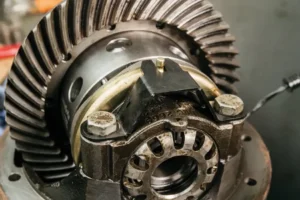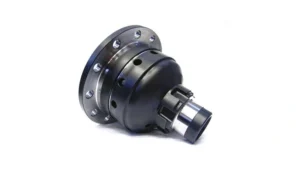When it comes to car performance, especially in challenging driving conditions, the type of differential your vehicle has can make a big difference. Two terms often tossed around in this context are Positraction and limited-slip differential (LSD). While they’re related, they’re not exactly the same. Let’s break down what each term means and how they differ.

What is a Limited-Slip Differential (LSD)?
A limited-slip differential, commonly referred to as LSD, is designed to improve traction by limiting the difference in speed between the two wheels on the same axle. This means when one wheel starts to lose grip and spin, the LSD steps in to send more power to the wheel with better traction. This feature is crucial when driving on slippery roads, uneven surfaces, or during high-performance driving.
There are several types of LSDs, including:
- Clutch-Type LSD: Uses clutch plates to manage power distribution. It’s one of the most common types.
- Torsen (Gear-Type) LSD: Relies on a complex set of gears to balance power between wheels.
- Cone-Type LSD: Similar to clutch-type but uses conical surfaces for friction.
- Viscous Coupling LSD: Uses a thick fluid that provides resistance when there’s a speed difference between the wheels.
Each of these LSDs has its own strengths and weaknesses, depending on the driving conditions and vehicle application.
What is Positraction?
Positraction is a specific type of clutch-based LSD that was introduced by General Motors (GM) back in the 1960s. It became a staple feature in many of GM’s high-performance cars, particularly during the muscle car era. The concept behind Positraction is straightforward: when one wheel starts to slip, the clutch plates engage to lock the two wheels together, ensuring that both wheels turn at the same speed and maintain traction.
The term Positraction became synonymous with performance, especially among muscle car enthusiasts. It was GM’s answer to the need for better traction in powerful rear-wheel-drive vehicles, making it easier to control the car during aggressive acceleration and cornering.
Positraction vs. Other LSDs
While Positraction is a form of limited-slip differential, not all LSDs are Positraction. Positraction is particularly well-suited for straight-line acceleration and situations where the power needs to be evenly distributed quickly between the wheels. On the other hand, gear-based LSDs like Torsen can be more effective in providing continuous and smooth power transfer, especially in cornering or off-road conditions.
Conclusion
Understanding the difference between Positraction and other types of limited-slip differentials is crucial for anyone interested in vehicle performance. While Positraction was a game-changer in its time, especially in the context of classic American muscle cars, technology has continued to advance, offering more sophisticated solutions for managing power and traction.
Whether you’re restoring a classic car, choosing a new vehicle, or just curious about automotive technology, knowing how these systems work can help you make better decisions about your vehicle’s performance and handling.



